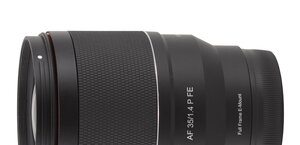Viltrox AF 75 mm f/1.2
1. Introduction
Apart from interesting, often completely unique parameters, Viltrox is one of the first independent optics producers that also offers lenses with autofocus; mind you, they don't limit themselves to the open Sony mount but also include instruments designed for mirrorless Fujifilm X and Nikon Z systems.
 |
Please Support UsIf you enjoy our reviews and articles, and you want us to continue our work please, support our website by donating through PayPal. The funds are going to be used for paying our editorial team, renting servers, and equipping our testing studio; only that way we will be able to continue providing you interesting content for free. |
- - - - - - - - - - - - - - - - - - - - - - - - - - - - - - - - - - - - - - - - - - - - - - - -
Small wonder such an instrument had caught our attention and we decided to check its optical and mechanical properties. We would like to thank FotoTechnika, the Polish distributor of the Viltrox brand name products, for lending us one specimen of the lens for testing purposes.
 |
You are also invited to get acquainted with our test procedure, described in the article "How do we test lenses?" If you feel it’s still not enough, please go to our FAQ section where you can find some further explanation.







